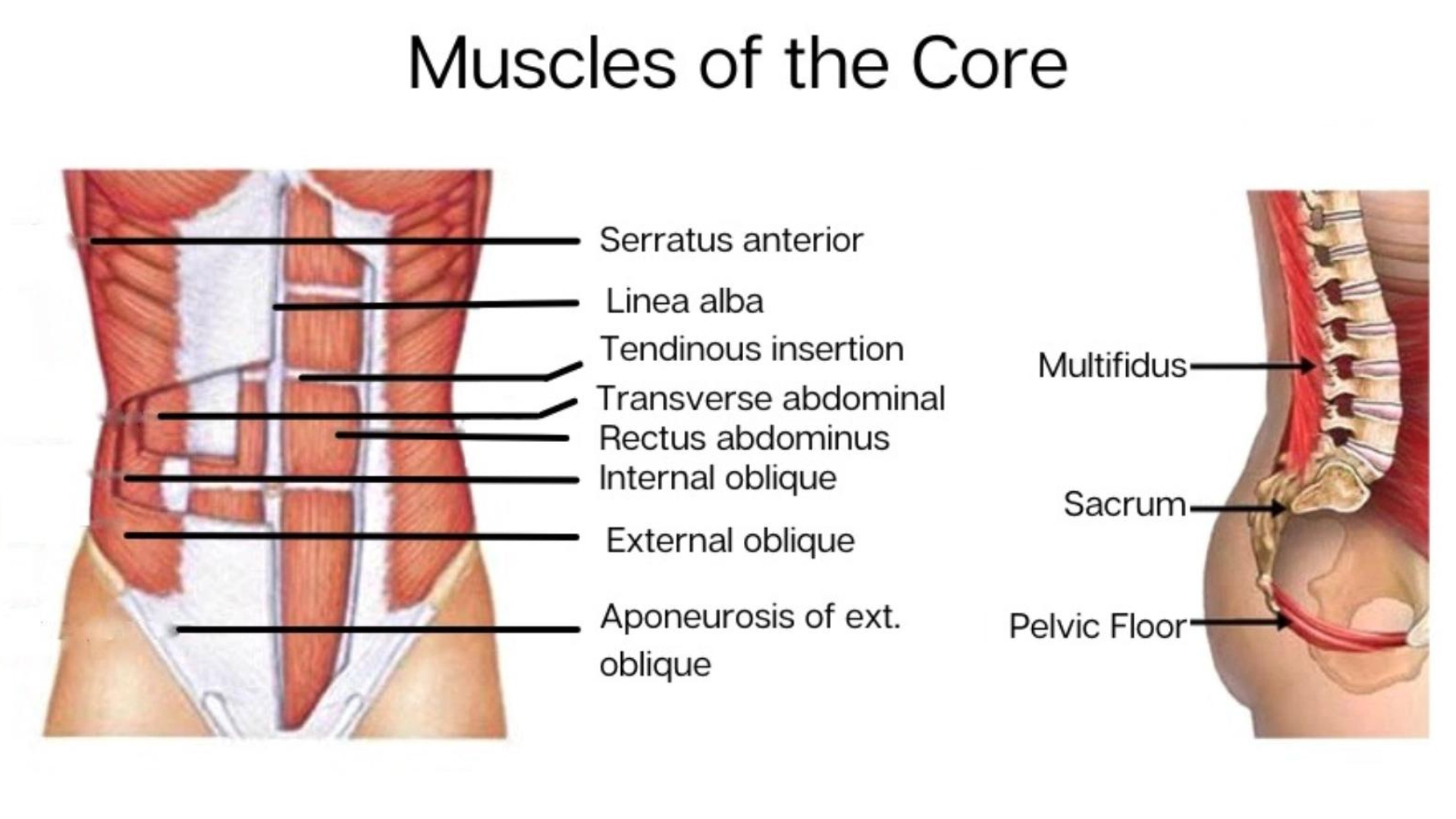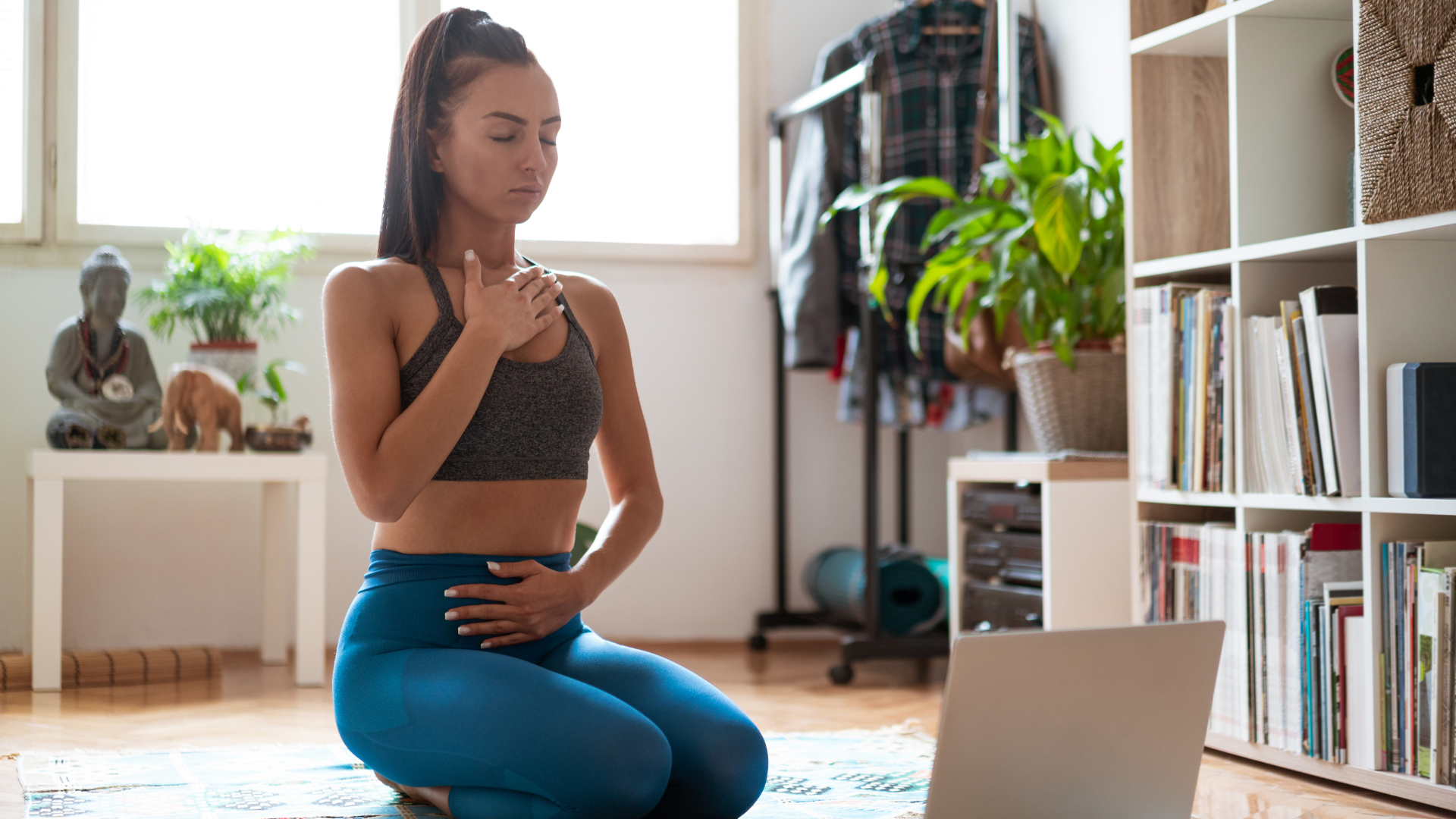Core Strength is the Key to a Better Ride (Here's How to Get It)
As an equestrian strength and conditioning coach, one of the most common requests is ‘I want to improve my core stability’. But what exactly is core strength? Do you need to have a washboard six pack?! (The answer is no, before you worry!) Equestrians need a strong core to absorb the forces generated by the horse's movement. A weak core can lead to back pain, neck pain, and other injuries.
In order to effectively train the core, we need to understand it’s anatomy and function. Once we understand this, we can train with intent and focus on specific outcomes - rather than throwing in some sit ups into a session.
In this blog post, we will explore the concept of the core, its role in spinal function, and why it is vital for equestrians. Additionally, I’ll demo exercises backed by recent scientific research to help improve core strength!
Core stability is the ability of the core muscles to control the movement of the spine and pelvis during dynamic activities. It is important for maintaining good posture, preventing injuries, and improving athletic performance.
How often do you think of spinal function when you consider core training? Spinal function is the ability to create, absorb and transfer force and motion during a skilled motor task - such as riding. Therefore, good spinal function is crucial for core strength. Spinal ability can be split into four categories:
Mobility: the freedom of movement at the spinal segment
Motor control: your ability to process sensory input, interpret stability and establish a strategy to overcome both predictable and unpredictable movements (like when your horse spooks at the flower pot!)
Work capacity and muscular endurance: your ability to produce & tolerate varying intensities and durations of work to perform your best
Strength: your ability to produce force
Spinal Function
The core's primary function is to provide stability and support to the spine. It acts as a natural corset, working in coordination with the spinal column to distribute forces generated through movement. A strong and stable core helps prevent excessive stress on the spine, reducing the risk of injuries, including low back pain, which is a common concern among equestrians due to the repetitive nature of the sport.
What is the core comprised of?
To truly appreciate core strength, we must understand what comprises the core. The core encompasses a complex system of muscles, including the rectus abdominis, internal and external obliques, transverse abdominis, multifidus, erector spinae, and pelvic floor muscles. Additionally, it involves the diaphragm, which aids in breathing mechanics and plays a crucial role in core stability. These muscle groups work synergistically to stabilise and support the spine, ensuring efficient movement and minimising the risk of injuries.
Our systems are interconnected, and given that much of this ‘core’ musculature attaches to the hips and pelvis - we must consider how we use our hips and pelvis during core training. This is why when I coach core exercises, I ask you aim to maintain a ‘neutral’ pelvis, rather than to have an anterior or posterior pelvic tilt. ‘But, what’s that Liv?’ I hear you say…
Anterior and posterior pelvic tilt:
Anterior pelvic tilt is when the pelvis is tilted forward, causing the lower back to arch and the abdomen to protrude. It is often caused by weak abdominal muscles or tight hip flexors.
Posterior pelvic tilt is the opposite of anterior pelvic tilt, in which the pelvis is tilted backward (the front of the pelvis rises and the back of the pelvis drops). It is often caused by tight hamstrings or weak gluteal muscles.
Improving Core Strength: Evidence-Based Approaches:
First of all and most importantly - hours in the saddle! Riding is a skill, and you will train your core whilst training your skill. When I researched the strength profiles of elite vs. novice dressage riders, I put the riders through a series of standardised core strength tests. Some riders in their 60s had significantly stronger cores than the likes of young riders - without doing any isolated core exercises! This is because the volume of riding they were doing everyday for a number of years.
But, if you don’t have 6 horses to ride a day, these core exercises will make you stronger for your discipline.
The term ‘core stability’ for exercise prescription can be problematic because it doesn’t describe the intent of an exercise. Are you bracing? Rotating? Make sure you know what the intent of the exercise is - I’ll aim to explain in detail:
Core Bracing:
One of the key concepts highlighted by Dr. Stuart McGill is the importance of core bracing during exercises. This technique involves contracting all the core muscles simultaneously, providing a stable base upon which other movements can be built. Core bracing can be practiced by consciously contracting the abdominal muscles and drawing the belly button in towards the spine.
An example would be a a plank. Planks engage multiple core muscles simultaneously. Begin with a basic forearm plank by assuming a push-up position while supporting your body weight on your forearms and toes. Hold this position for 20-30 seconds and gradually increase the duration as you progress. Other variations include side planks and high plank with arm or leg lifts.
Plank tutorial
2. Anti-Rotational Exercises:
Research by Alex Wolf emphasizes the effectiveness of anti-rotational exercises in developing core stability. These exercises challenge the core muscles to resist rotational forces. An examples would include the Pallof press which engages multiple core muscles and enhances stability. Perform 10-12 repetitions on each side, gradually increasing it as you improve
3. Dynamic Core Exercises:
McGill's research clarifies the significance of incorporating dynamic core exercises to mimic real-life movements and challenges faced by equestrians. Exercises such as medicine ball rotations, wood chops, and kneeling cable chops help strengthen the core in a multi-planar fashion, enhancing functional stability during riding.
Woodchop tutorial
4. Functional Breathing:
Optimising breathing mechanics is an under-looked component of core strength. Recent studies have shown that coordinating breathing patterns with core and pelvic floor engagement can significantly improve core stability. Diaphragmatic breathing exercises, which focus on deep belly breathing, can enhance core activation and contribute to better overall core strength. Additionally, literature has shown it to reduce anxiety. Give it a go!
Try the 4-6-6-2 breathing exercise:
Lie down on your back, or sit comfortably with one hand on your chest and the other hand on your stomach.
Breathe in slowly and deeply through your nose for a count of 4 seconds.
Hold your breath for a count of 6 seconds.
Exhale slowly and completely through your mouth for a count of 6 seconds.
Hold your breath for a count of 2 seconds.
Repeat steps 3-5 for 5-10 minutes.
Tips:
Make sure that your stomach rises when you inhale and falls when you exhale. This indicates that you are using your diaphragm to breathe.
If you feel lightheaded or dizzy, stop the exercise and take a few normal breaths.
You can practice this exercise anytime, but it is especially helpful before bed or when you are feeling stressed or anxious.
How does it work?
Functional 4-6-6-2 breathing works by activating the parasympathetic nervous system, which is responsible for the "rest and digest" response. When the parasympathetic nervous system is activated, the heart rate slows, blood pressure drops, and breathing becomes deeper and more relaxed. The exercise is effective for relieving stress and anxiety because it helps to focus the mind on the present moment. When you are focused on your breathing, it is difficult to worry about the past or future. (Jerath, et al 2015)
Now go try!
〰️
Now go try! 〰️
Much of this is the rationale of why I programme exercises as I do currently, so I hope it enable you to understand why we do certain exercises.
By understanding the composition of the core and the factors influencing core strength, we can devise effective training strategies to improve both stability and performance in the saddle. Incorporating evidence-based exercises such as core bracing, anti-rotational exercises, dynamic core movements, and functional breathing can help achieve significant gains in core strength.
Remember to consult with a qualified strength and conditioning coach or healthcare professional before starting any new exercise program to ensure proper technique and individualised training.
Want a plan to help you get strong for the saddle? Fill in the form below and I’ll be happy to help
References
Much of this I learned in a day seminar with Alex Wolf at Hartpury University in 2022, taken from his research in Spinal exercise Prescription referenced: Spencer, S., Wolf, A. and Rushton, A., 2016. Spinal-exercise prescription in sport: classifying physical training and rehabilitation by intention and outcome. Journal of athletic training, 51(8), pp.613-628
McGill, S., 2006. Ultimate back fitness and performance (p. 325). Ontario: Backfitpro Incorporated.
Park, C., Yoon, S., Yoon, H., Kim, K., Cha, Y. and Park, I., 2021. Effects of core stabilization exercise on muscle activity during horizontal shoulder adduction with loads in healthy adults: a randomized controlled study. Journal of Mechanics in Medicine and Biology, 21(09), p.2140049.
Hampson, A. and Randle, H., 2015. The influence of an 8-week rider core fitness program on the equine back at sitting trot. International Journal of Performance Analysis in Sport, 15(3), pp.1145-1159.
Kahle, N.L. and Gribble, P.A., 2009. Core stability training in dynamic balance testing among young, healthy adults. Athletic Training & Sports Health Care, 1(2), pp.65-73.
Jerath, R., Crawford, M.W., Barnes, V.A. and Harden, K., 2015. Self-regulation of breathing as a primary treatment for anxiety. Applied psychophysiology and biofeedback, 40(2), pp.107-115.







